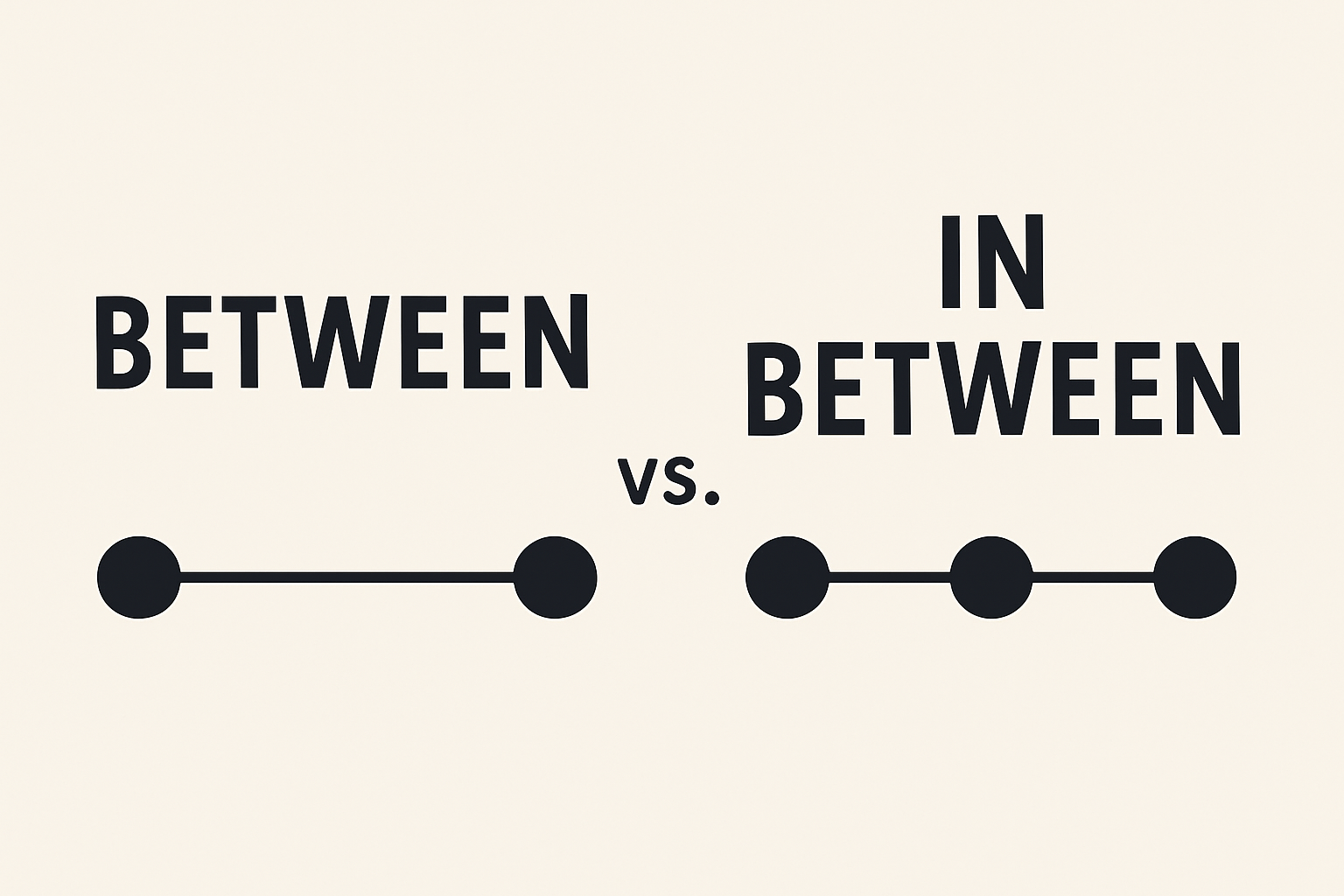Between vs In Between: What’s the Difference?

You’ve probably used “between” and “in between” interchangeably without thinking twice. After all, they sound similar and sometimes, they even seem to work in the same sentence. But there’s a subtle difference that can affect how polished and professional your writing sounds.
Whether you’re crafting an email, a blog post, or a business proposal, knowing when to use “between” vs “in between” adds clarity and style to your communication. This guide will walk you through the differences, give you real-world examples, and offer practical tips to help you use both correctly without second-guessing yourself.
Related post: Adopted vs Adapted: Know the Difference and Use Them Correctly
Explore more: See other commonly confused word pairs
Grammatical Explanation
Let’s start with the basics:
“Between” is a preposition. It’s used to compare or link two (or more) specific things, whether they’re physical objects or abstract ideas:
- The charger is between the books.
- She had to choose between speed and accuracy.
“In between” works as an adverb or a prepositional phrase. It’s used when describing something that happens or exists within a range—but the range itself isn’t clearly defined:
- He takes breaks in between meetings.
- There’s a long pause in between conversations.
When to Use Each
Use “between” when naming specific items or points.
Use “in between” when describing something vaguely positioned or occurring within two limits—like time or space.
Think of “between” as a connector, and “in between” as a descriptor. The distinction is subtle but useful.
Real-Life Examples of Between vs In Between
Let’s break it down with real usage:
1. Correct use of “Between”:
- The printer is between the filing cabinet and the desk.
- He’s choosing between a leadership role and a technical path.
2. Correct use of “In Between”:
- There’s a 10-minute gap in between sessions.
- In between the chaos, she found a moment of quiet.
3. Common Missteps:
- She’s deciding in between option A and option B. (✘)
✔ She’s deciding between option A and option B. - The table is in between the two chairs. (Technically correct, but “between the two chairs” sounds more direct.)
The rule of thumb? If you’re identifying both sides, go with “between.” If not, “in between” usually fits better.
Common Mistakes
Here are a few errors to watch out for:
- Swapping “in between” for “between” in formal writing:
✘ He negotiated in between two departments.
✔ He negotiated between two departments. - Using “in between” where it adds no value:
✘ The gap in between the buildings was narrow.
✔ The gap between the buildings was narrow. - Assuming they’re interchangeable:
While “in between” can feel more casual or expressive, it isn’t always grammatically ideal.
Pro tip: Stick with “between” when the sentence is direct and specific. Use “in between” to describe space, time, or position more abstractly.
🔗 Reference: Merriam-Webster Dictionary – Between
Memory Tips for Between vs In Between
Here’s a simple way to remember:
- “Between” = for clear choices or comparisons
(If you can name both sides, use this.) - “In between” = for vague space or time
(When the sides aren’t named or aren’t important.)
Visual cue:
Imagine two labeled boxes:
A — B → That’s between.
Now imagine something floating in the gap: that’s in between.
Quick test:
If the sentence works without “in,” it probably doesn’t need it.
This trick can help you sharpen your writing with minimal effort—and avoid sounding clumsy in high-stakes communication.
Conclusion
Both “between” and “in between” have their place but they’re not the same. Use “between” for specific, defined comparisons, and “in between” for vague or descriptive references. Small word choice, big difference.